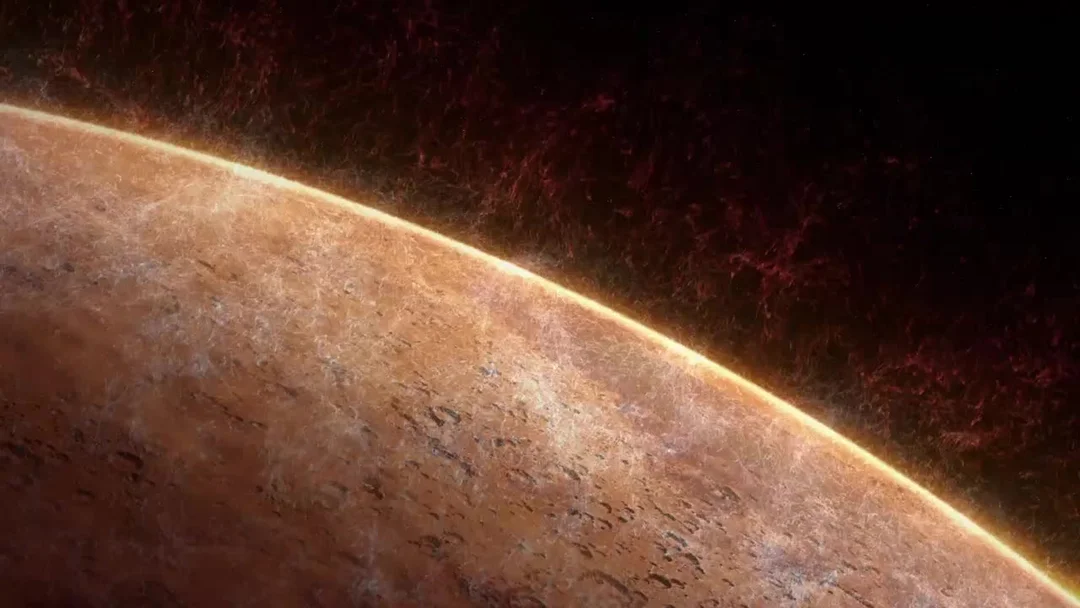
Lost and Found: Unraveling the Mystery of Mars’ Missing Water
For years, scientists have been puzzled by the Red Planet's dramatic transformation. Once a world brimming with flowing water, Mars now stands as a cold, arid desert, marked by ancient riverbeds and empty lake basins. The question of where all that water went has captivated researchers, and recent studies are finally piecing together the answer.
Two major findings shed light on this Martian enigma. Firstly, data from NASA's Hubble Space Telescope and the Mars Atmosphere and Volatile Evolution (MAVEN) mission are providing crucial insights into how Mars slowly lost its water to space. Secondly, a new study suggests that vast reservoirs of liquid water may still exist deep beneath the Martian surface.

Hubble and MAVEN's collaboration focuses on tracking hydrogen atoms as they escape from the Martian atmosphere. John Clarke, a researcher at Boston University, explains that some of the missing water likely froze underground, while the rest broke down into hydrogen and oxygen, with the light hydrogen atoms escaping into space. These real-time measurements are allowing scientists to estimate how much water has been lost over billions of years, inching them closer to understanding the process that turned Mars into the dry world it is today.
However, the story doesn't end with atmospheric escape. A separate study published in the National Science Review proposes a compelling alternative: much of Mars' water may be hidden beneath the surface. A team of researchers from China, Australia, and Italy analyzed seismic waves from meteorite impacts and marsquakes detected by NASA's InSight lander.
Prof Hrvoje Tkalčić from the Australian National University likened this technique to using ultrasounds to see inside a patient's body. By measuring the speed of seismic waves traveling through the Martian crust, the team detected a layer, 5.4–8km below the surface, where the waves slowed down, indicating the presence of water. The estimated amount of water in this underground aquifer aligns with the volume of water that has been 'missing' from the planet's surface. The temperature at that depth is high enough that the water is likely in liquid form.
If confirmed, the existence of a vast, liquid aquifer could have profound implications. "The presence of liquid water is regarded as one of the most critical factors in this endeavour, as it is a fundamental prerequisite for life as we know it," Tkalčić said. This underground reservoir could become a prime target in the search for extraterrestrial life. Furthermore, finding and accessing this water would be critical for establishing future human settlements on Mars.

Adding another layer to the puzzle, a third study examines the composition of Mars' iconic red dust. For years, scientists believed the reddish hue was due to hematite, a type of rust lacking water. However, comparing light absorption patterns of Martian dust with various minerals in the lab suggests that Martian dust is more likely composed of ferrihydrite and basalt. Ferrihydrite is a rust that contains water and likely needed a cold, wet environment to form. The study posits that early Mars had cold seas, with beaches akin to those of the Arctic Ocean.
While each of these studies offers valuable insights, it's essential to remember that the picture is still incomplete. More data is needed to confirm the existence of the underground aquifer and to further refine our understanding of the Martian atmosphere and surface. Future missions equipped with more sophisticated seismometers and subsurface exploration capabilities will be crucial in painting a clearer picture of Mars' watery past and potential future.
Ultimately, unraveling the mystery of Mars' missing water is not just about understanding the past; it's also about paving the way for future exploration and potential human habitation. What do you think? Could life exist in a Martian aquifer? How should future missions prioritize the search for subsurface water?
Share your thoughts in the comments below!